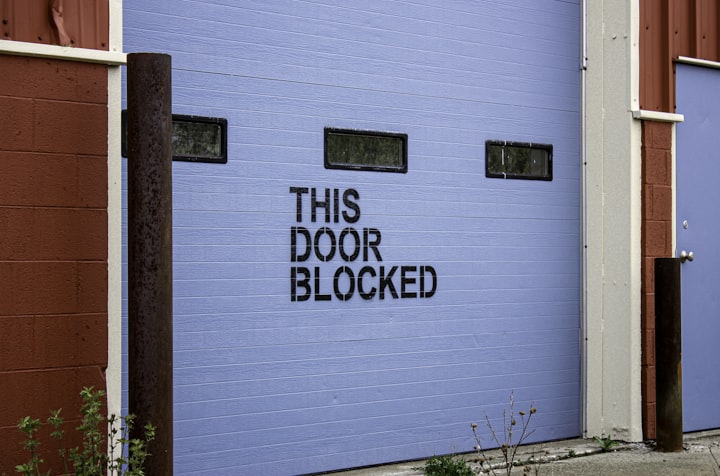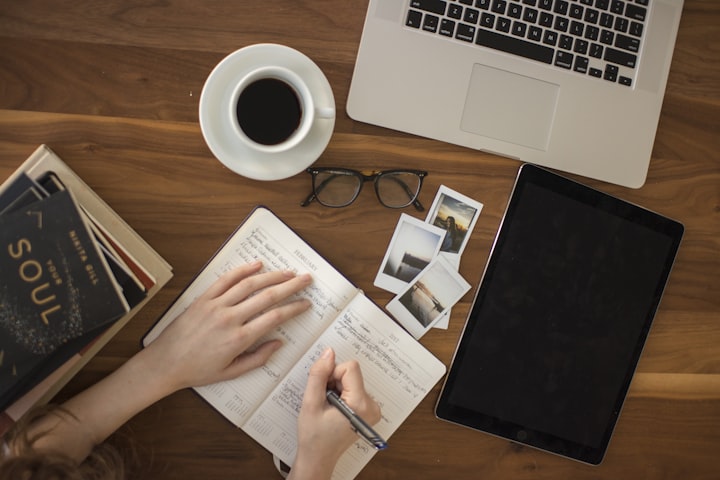Reclaim Your Identity to Unblock Your Creativity
Lessons from Week 2 of The Artist’s Way

This story is Part 2 of a 12-part series of reflections on my experience going through The Artist's Way by Julia Cameron. If you are interested in reading The Artist’s Way, (this is an affiliate link) or click here for a free PDF of the book.
A few weeks ago, I started working through The Artist’s Way by Julia Cameron with a group of friends and I honestly can’t stop talking about it.
We are just beginning week three of what the cover describes as “a course in discovering and recovering your creative self,” but I have already seen a MASSIVE change in myself.
In the past, when an idea popped into my head, I generally didn’t take action on it. Instead, I would think to myself, if it’s really a good idea, I’ll remember it later. A very unfortunate truth for my ADHD brain is that this is not, in fact, how ideas work. I’ve lost so many good ideas this way, but the reality is that ideas are not always going to come to you at a convenient time, so you need a plan for what you’re going to do with them.
Last night, I had an idea for a snippet of dialogue while I was reading an article on this very platform, and instead of just hoping I would remember it at some later, convenient time, I started writing. I kept writing until I had a rough structure for an entire first chapter of a book.
Then, I remembered a prompt I had from a creative writing class I took that I have just been sitting on for almost a month: write a story that includes the words “dentist”, “telemarketer”, and “balloon”. I was suddenly inspired and able to jot down the entire framework for a short story in about 10 minutes.
I say all of this not to brag, but to tell you that if you just get out of your own way, this can happen to you too. I’ll explain more below in my reflections on week two of The Artist’s Way.
Lesson #1: You have to trust yourself.

This whole chapter of the book is about trusting your creative instincts and avoiding what Cameron calls “the first think”. This is the idea that we let our own self-doubts about our creative identities and skills sabotage any hope we have of actually being creative.
Every time you don’t follow your inner guidance, you feel a loss of energy, loss of power, a sense of spiritual deadness. — Shakti Gawain (The Artist’s Way, pg. 43).
My story from the beginning of this article is a great example of how this self-sabotage works. You get an idea, but instead of acting on it, you sit and think about it. If you’re anything like me, you sit and think about it for so long that you start coming up with reasons why it won’t work, and five minutes later, you’ve talked yourself out of taking action on the idea.
The lesson here is to get out of your own way by taking immediate action whenever possible (even if it’s just jotting down a quick note for later).
Lesson #2: Cultivate a safe space for your creative self

If you consider yourself a creative person, you probably have at least one person in your life who has harmed your creative self-worth in some way. It doesn’t matter if you’re an actor, a writer, or a designer, we all have that one person who responds to our creative work with a less-than-positive attitude.
I’m not talking about the folks who give you constructive, actionable criticism (those friends are invaluable). I’m talking about the people who seem offended that you would even try to express your creativity. Maybe it’s a parent who tells you, “That’s nice, sweetie, but you’ll never be a real artist.” Or perhaps it’s the “friend” who seems to be jealous of your creative success. Either way, those people can be dangerous to keep around because they sow self-doubt.
Now, I’m not suggesting that you cut your entire family out of your life if they aren’t fully supportive of your art. That being said, I AM suggesting that you protect your artist around them. This might look like disinviting them from your art show opening or choosing to share your rough draft with a trusted friend instead of a critical sibling.
Of course, it can also look like cutting people who are toxic to your creativity out of your life. Cameron refers to these people as poisonous playmates and crazymakers. Poisonous playmates are those “friends” who just never seem to be supportive of your creative self, likely because there is some kind of jealousy there. Crazymakers are the people who expect you to spend all of your time and energy helping them with their needs (think of the friend who calls you at midnight on a Tuesday because the fixer-upper vehicle that they never fixed up broke down at the bar).
You know who these people are in your life. We all have them, and it is imperative that you protect your time and your art from the negative energy they carry with them.
Lesson #3: Give yourself a reality check

The WORST part of this week’s tasks was reflecting on how I actually spend my time during any given day. There were several activities, including:
- writing down 20 activities you enjoy and then reflecting on the last time you actually did them
- making a list of the 5 things you spend the most time on in a day and whether you actually enjoy them
- making a graph of how satisfied you are in several areas of your life (health, work, romance, etc…)
This was not a good time. I doubt that anyone who goes through this process has a good time with these tasks because if you were already fully satisfied with all areas of your life and spending your time doing things you enjoy, you probably wouldn’t be creatively blocked.
The difficult truth is that a lot of us are just comfortable in our routines, but comparing how we want to spend our time with how we actually spend our time reveals the gap between the two. I won’t lie, I was pretty disappointed with how much time I spent just…wasting time.
This is where the choice comes in. Do I turn the TV off, put my phone away, and give myself some focused time to create something? Or do I just keep scrolling without a purpose?
Right now, I’m choosing the first option. I won’t be giving up TV or social media, but I’m planning to be more intentional about what I’m consuming and when. Watching TV while I try to write is possible, but it isn’t productive. It usually takes me 3–4 hours to write something finished if I have a distraction in the background. Without it, it takes an hour, tops.
Recognizing the behaviors that harm your creativity is a difficult thing to do, but it’s even harder to take action on them.
What will you choose?
About the Creator
Molly Miller
Just a girl in the world sharing my personal writings on trauma, equity, and health.






Comments
There are no comments for this story
Be the first to respond and start the conversation.